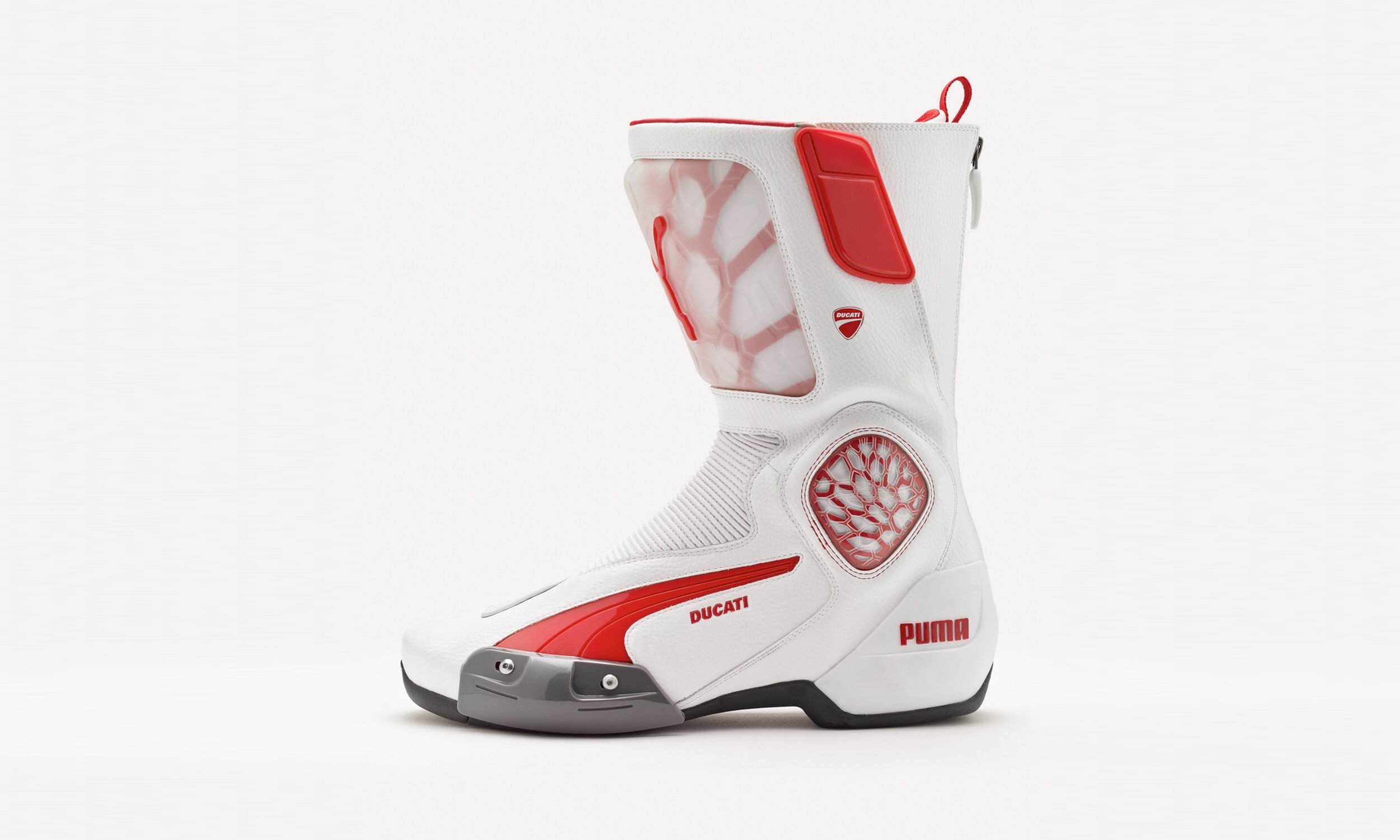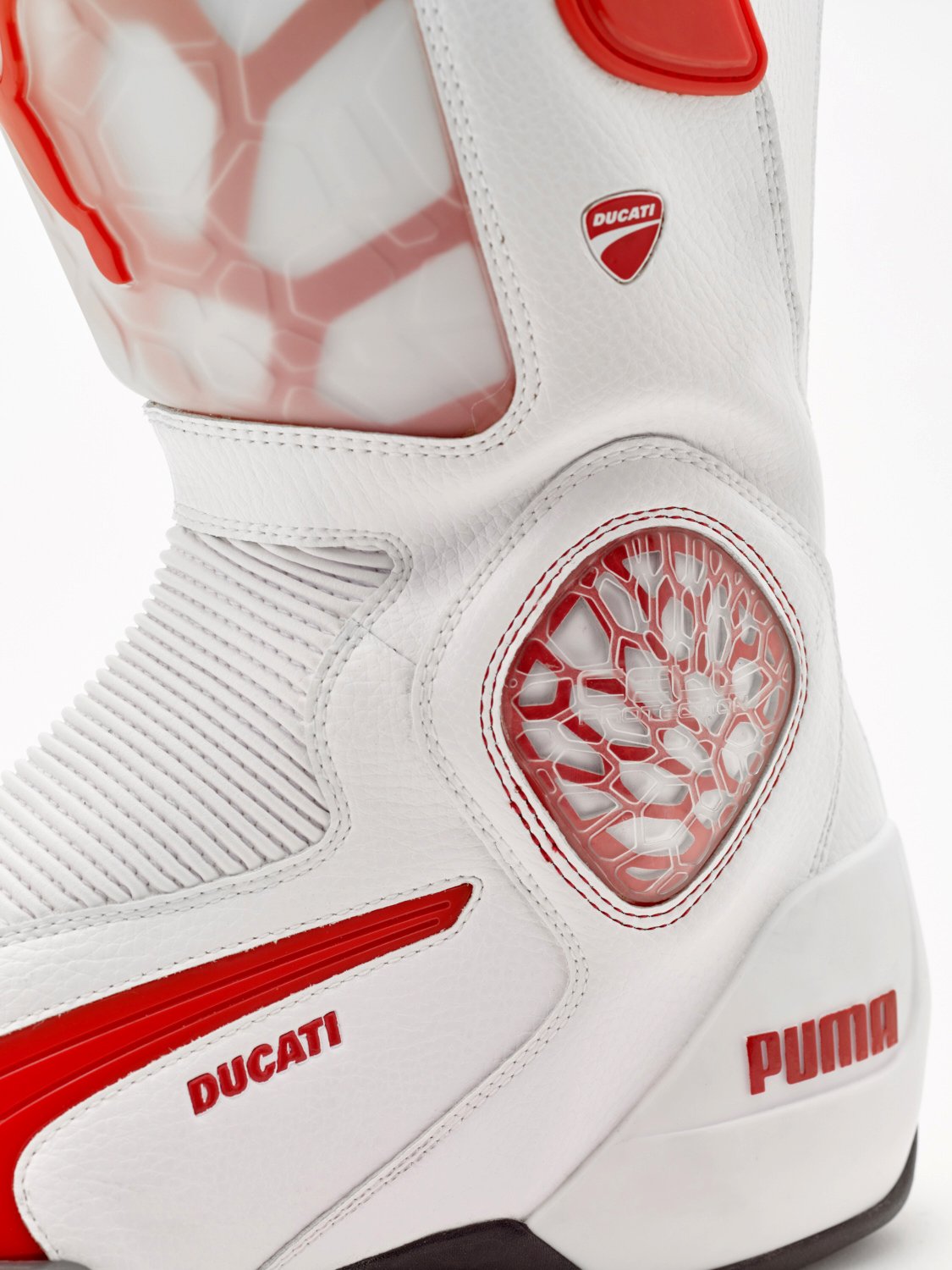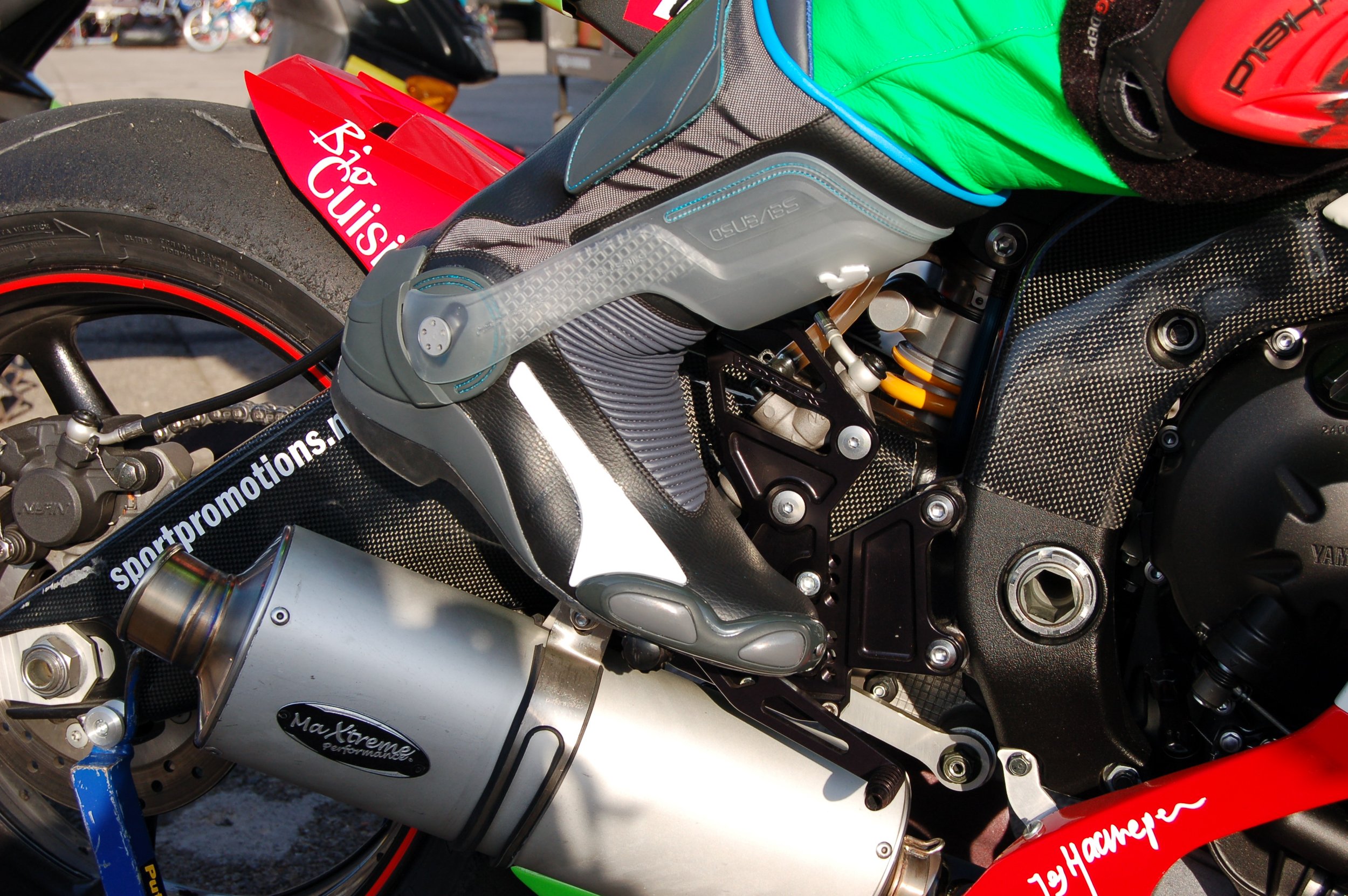
Race Design
In 2010 a got a call from a recruiter who spoke of a job with a brand that was involved with motorsport and involved relocating to Europe. They asked if I was interested. They had me at motorsports.
One of the things that drew me to Puma when the role as Design Director of Footwear was offered to me was the brand’s established leadership in motorsports. Of special interest was their investment in two wheeled sports including a licensing partnership with the legendary Italian motorcycle brand, Ducati. At long last I would be presented with an opportunity to work on product design for motorcycling.
Entering the motorcycle boot industry was no easy task. Becoming relevant was left to the legacy brands such as Alpinestar, Sidi, Daytona and Dainese there were many others that lined up ahead of Puma. Still the brand managed to develop and produce not only a competent race boot but an attention getting one as well. The S1000 was one of the most notable products that Puma ever introduced. The followed it up with a line of boots and shoes that were well performing and stylish.
While the S1000 fulfilled the standard needs of a high level racer, it had some downsides. A product that was as good as the S1000 but better was briefed. The Puma 750 was the name of the would-be boot and I added it to my responsibilities alongside managing the design team. By then I had been racing motorcycles for nearly 10 years so I had a solid perspective from which to address the problem of creating a performance product. Doing that in a way fitting to the Puma brand was a new challenge for me. The beginning for me was a “minimize to the max” approach.
The Desmo was a followup to the successful V1 and v2 boots. It incorporated Puma Cell technology which was designed to be able to apply to a range of products across the entire brand. Inspired by nature, it used a selection of layered materials combined to offer lightweight protection.
I applied Cell to the Desmo boot in the areas that needed the most impact protection. A nod to nature is not something commonly found in motorsport. In that way the biological aesthetic of the Desmo boot was a shift.
The 750
-

The 1000
The Puma 1000 was a competent race boot that got a lot of attention for both functionality and design.
-

Over Engineered
As competent as the boot was, it was over-engineered, had redundant protective layers making it heavier than necessary and it was complicated to use.
-

Performance Perspective
I knew from personal experience both the advantages and disadvantages of the Puma 1000 boot. While it offered great protection, it was heavy, bulky and a nightmare to get on and off.
-

Patent Protection
The patented “Ghost Doctor” technology on which the boot’s functionality was based allowed for new design possibilities.
-

Angle Analysis
I did a deep dive analysis of the system to understand how best to optimise protection.
-

Less is More
I took a “minimize to the max” approach and focused on removing unnecessary parts. In doing so I determined I could save nearly 300 grams.
-

Ghost Doctor Lite
The Ghost Doctor system was re-engineered in a way that would reduce weight (20% lighter) while maintaining the same functionality.
-

How It Works
The Ghost Doctor system prevents injuries common in motorcycle racing. The system prevents over-extension in both the forward and rearward direction by limiting how much the boot can flex in either direction.
-

A Doctor In The Boot
A boot with Ghost Doctor technology was analogous to having a physician with you on the track.
-

-

-

-

Transparent Inspiration
How the boot worked was important but so was the look and feel. I took advantage of translucent finishes that were applied to protective equipment in motorcycle and snowboard products as inspiration.
-

Custom
Ghostly Finish - The translucent finish of the Ghost Doctor technology reinforced the story of the “hidden” doctor that is inside the boot. It also provided an opportunity to let racers personalise the look of their boot
-

Graphics
A simple graphic added to the shin panel changed the look of the boot.

Testing
We did field testing of the 750 in Valencia at the Circuit Ricardo Torno with both amateur racers and professionals in training.
Improvement Learning
“My impression is there is just a little too less protection. But the rest of the boot is quite good.”
We got some things right but understood that we had some work to do.
Project Profile
What is it?
A collection of performance motorcycle boots.
Why is it innovative?
Use of unique materials and construction deliver new safety functionality.
What were the biggest challenges?
Engineering new features that work.
What was your role?
Designer.
Why was it successful?
The product challenged traditional motorcycle boot design.










